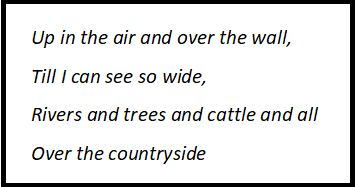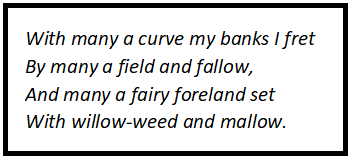Hi Everyone!! This article will share The Brook Important Questions & Answers.
Written by Alfred, Lord Tennyson, the poem celebrates the power and beauty of nature and draws parallels between a winding brook and a man’s journey through life. In my previous posts, I have already shared The Brook Stanza-Wise Summary and The Brook Questions & Answers so, you can check these posts as well.
The Brook Important Questions & Answers
Question 1: Read the lines and answer the questions:

(a) How does the brook flow after taking its ‘birth’?
Answer: The brook flows hurriedly after taking its ‘birth’.
(b) Which birds frequently visit the place where the brook takes its birth?
Answer: Coots and herns frequently visit the place where the brook takes its birth.
(c) How does brook flows down the valley?
Answer: It flows down the valley with a noise.
Question 2: How does the brook babble? Why has the narrator used this word?
Answer: When the brook passes over pebbles and stones, it makes a lot of noise. It seems as if it were babbling or talking gaily. That is why the narrator has used this word.
Question 3: When does the sound of the brook resemble a ‘murmur’?
Answer: When the brook reaches the end of its journey it slows down in speed considerably and the sound then made by the brook resembles a ‘murmur’.
Question 4: Read the lines and answer the questions:

(a) Tell the movement of the brook at this stage.
Answer: At this stage, the movement of the brook is sedate and subdued.
(b) At this stage, what place does the brook pass by?
Answer: The brook passes by lawns, grassy plots of land, where hazel trees grow and bushes bearing forget-me-nots.
(c) At this stage, which bird flies near the brook?
Answer: The swallow flies near the brook at this stage.
(d) What does ‘netted sunbeam’ mean? How does it dance?
Answer: The interplay of sunshine and shadow makes sunbeams appear to be trapped on the surface of the brook; they appear to dance to the movement of the brook.
The Brook Important Questions & Answers
Question 5: Describe the various things a brook travels past to join the river.
Answer: The brook emerges from the mountain top where coots and heron live and flows down the hills and across valleys to empty into the river. It bubbles with energy as it flows down the hill-side making a lot of noise. As it passes through different landforms like forests, fields that are either fertile or fallow, grassy lawns or flower-filled gardens with forget-me-nots and hazel trees, it slows down considerably. It does not follow a straight path but meanders on around rocks and boulders without letting anything stop its path. Thus it continues to flow from its source to the river eternally.
Question 6: Read the lines and answer the questions:

(a) Explain ‘With many a curve………..’
Answer: The poet refers to the erosion of the bank by the constant brushing of the brook against the bank.
(b) What kind of terrain is referred to here?
Answer: The kind of land being referred to here is a land that is fertile and also a land that has become infertile due to successive efforts of farming.
(c) Explain the movement of the brook at this stage.
Answer: The brook moves swiftly and powerfully.
Question 7: How does the brook ‘sparkle’?
Answer: While the brook goes through its journey, the sunlight falls on its moving water and gets reflected. This creates the ‘sparkle’.
Question 8: During its journey, how many hills and bridges does the Brook pass through?
Answer: During its journey,the Brook passes through thirty hills and fifty bridges.
Question 9: Where does it finally meet the river?
Answer: The brook comes down to the plain region and then it meets the river.
The Brook Important Questions & Answers
Question 10: What does the poet mean by the statement – ‘With many a curve…………’
Answer: By this statement, the poet means that the brook has to change its path towards its journey to the river several times. It faces many difficulties just as humans face in their journey of life and change their ways for the betterment and to reach their goal.
Question 11: List some examples of alliteration from the poem.
Answer:
- ‘I make a sudden sally’
- ‘Against my sandy shallows’
- ‘And half a hundred bridges’
Question 12: What is ‘refrain’ in the poem? What effect does it create?
Answer: Refrain is a poetic device that expresses the opposite meaning words to create a special effect in the minds of the readers.
For example –
In the line – For men may come and men may go, come and go are two opposite words describing life and death at the same time to make the reader understand the mortality of living things.
So, these were The Brook Important Questions & Answers.